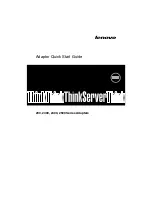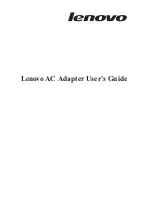
Scenario 2:3 - Flex-10 - VLAN Tagging (802.1Q) with Multiple Shared Uplink Sets (SUS) and Mapped VLANs - ESX 4 140
Scenario 2:3 - Flex-10 - VLAN Tagging (802.1Q)
with Multiple Shared Uplink Sets (SUS) and
Mapped VLANs - ESX 4
Overview
This scenario discusses the Flex-10 features provided in Virtual Connect. For an overview of Flex-10,
please refer to the following technology brief. HP Flex-10 technology brief;
http://h20000.www2.hp.com/bc/docs/support/SupportManual/c01608922/c01608922.pdf
Virtual Connect Flex-10 provides the ability to either present the 10Gb server NICs as single 10Gb NICs,
or divide each NIC into as many as 4 “physical function” NICs per NIC port. These physical function
NICs look to the server hardware and OS as physical NICs, have their own MAC address and can be
configured at speeds from 100Mb to 10Gb.
As shown in earlier scenarios, VLAN access can be handled in two different ways. Virtual Connect can
either pass VLAN/Non-VLAN traffic untouched to the host (Tunneling Mode) or Virtual Connect can
handle all VLAN tagging (Server Mapped VLANs). Each has their advantages as discussed in the
Introduction to Virtual Connect section, earlier in this document.
This scenario, using Map VLAN Tags, will focus more on the Virtual Connect Flex-10 technology. In this
scenario we have two10Gb uplinks configured with multiple VLANs. We will configure a VMware ESX
server with SIX NICs, 3 per NIC port, configured at various speed. Some NICs will be connected to
specific VLANs, so frames will be presented without tags, others will be configured with multiple networks,
were frames will be presented with tags. We will also show how the speed of each NIC can be varied
from speeds ranging between 100Mb to 10Gb.
Table 2-2
Flex-10 NIC – Optimization for a VMWARE ESX implementation
Console
NIC #1
VMotion
NIC #2
Production
NIC #3
Console
NIC #4
VMotion
NIC #5
Production
NIC #6
Traditional
1Gb
technology
1Gb
1Gb
1Gb
1Gb
1Gb
1Gb
Virtual
Connect Flex-
10
500Mb
2.5Gb
7Gb
500Mb
2.5Gb
7Gb
















































